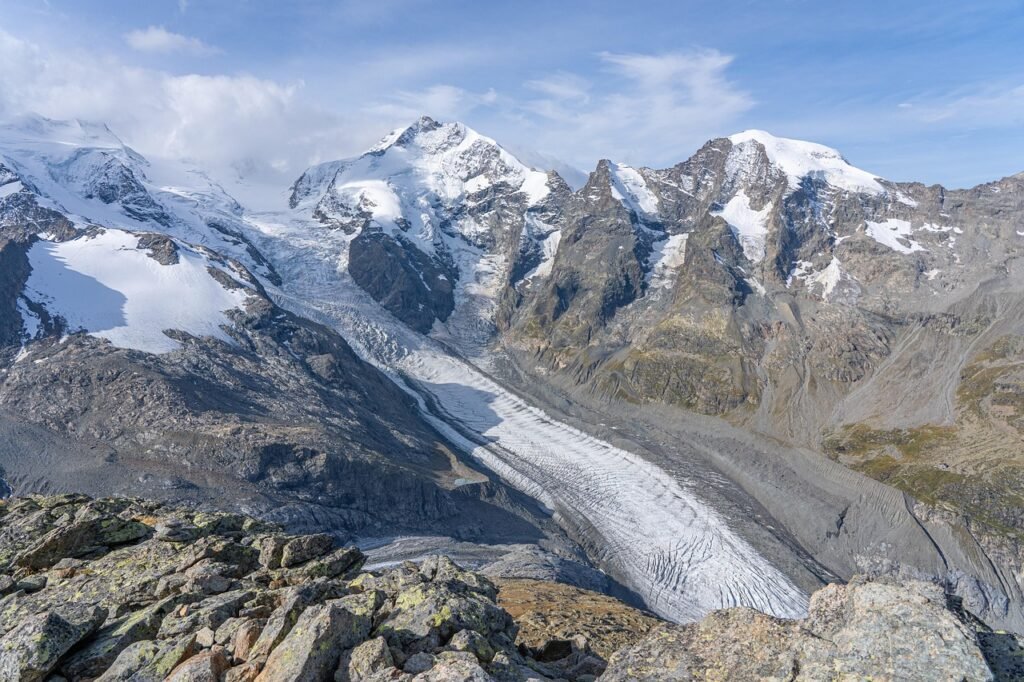In the quiet, rugged beauty of Pakistan’s Kohistan region, a local shepherd recently made headlines worldwide. While tending his animals in the Lady Valley, Omar Khan stumbled upon a sight that was both extraordinary and haunting—the perfectly preserved body of a man who disappeared nearly three decades ago. The remains still bore an identity card, revealing him as Naseeruddin, a father of two lost in 1997. This remarkable discovery has dominated news cycles, but its story goes well beyond a lost-and-found mystery, drawing sharp attention to the sweeping environmental challenges facing Pakistan and the world today.
The Human Story Behind the Ice
Naseeruddin’s disappearance is both tragic and relatable. According to reports, he and his brother were forced to flee their home due to a family dispute. They travelled on horseback through the isolated Supat—also known as Lady Valley—in Khyber Pakhtunkhwa. During their journey, a sudden snowstorm caught them off-guard. Attempting to find shelter, Naseeruddin stepped into a cave, fell into an ice crevasse, and vanished without a trace. Despite an immediate search and an eventual symbolic funeral, his fate remained a mystery until now.
For his family, the news has brought a peculiar sense of closure. Relatives described years of fruitless searching, noting that the glacier seemed impenetrable to any rescue effort at the time. The recovery of the body has allowed them to consider a proper burial, a small solace after decades of uncertainty.
Preserved by Nature, Revealed by Change
What is most striking about Naseeruddin’s remains is how astonishingly well they were preserved. Experts from Comsats University explained that the frigid, low-oxygen, and low-moisture environment within the glacier rapidly mummifies anything trapped inside, halting decomposition for decades or even centuries. Some clothing on the remains showed almost no signs of decay, with the identification card still legible.
However, his emergence from the ice is not a sign of nature’s ability to protect but a dire warning about how quickly our planet is changing.
Glaciers in Retreat: The Science
Pakistan is a country defined by its mountains and glaciers. With more glaciers than anywhere else on Earth outside the polar regions, it holds vast stores of fresh water, feeding the mighty Indus River that supports millions across South Asia. Yet, these glaciers are shrinking fast. Climate scientists have confirmed that warming temperatures and reduced snowfall have exposed ice masses to direct sunlight, accelerating the melt.
Government and academic reports presented at recent summits indicate that Pakistan has over 10,000 glaciers, with as many as 3,000 glacial lakes now forming, 33 of which are considered highly volatile. Since the 1960s, glacier cover in the region has declined by as much as 23%, and current projections are bleak. The International Centre for Integrated Mountain Development has warned that, if emissions continue at present rates, two-thirds of Himalayan glacier volume could disappear by 2100.
Disastrous Consequences for Millions
This rapid melting is not just an environmental concern—it is an existential one. Melting glaciers fuel unpredictable flooding in the Indus River, threaten rural livelihoods, and undermine food and energy security. In recent years, Pakistan has witnessed an increasing number of dangerous glacial lake outburst floods (GLOF), with 75 major events reported, endangering at least 7.1million people downstream. Reduced snowfall, down 40% from the three-decade average, further compounds the scarcity of fresh water, putting additional stress on agriculture and hydroelectric generation vital to Pakistan’s economy.
A Window to the Past—and a Warning for the Future
The return of Naseeruddin’s body is a window into the past, a reminder of the region’s traditions, hardships, and family bonds. But it is also a chilling reminder of how much the world around us is changing. As climate change accelerates glacier melt, it uncovers not only stories frozen in time but dangers and uncertainties for communities relying on these ancient ice fields.
Leading Pakistani and international scientists point out that these rapidly altering landscapes underscore the urgent need for global action. As Professor Muhammad Bilal of Comsats University stressed, the preservation of Naziruddin’s body is owed to the very conditions—cold, dryness, and isolation—that climate change is now eroding.
UK Perspective and International Concern
For the UK, where climate resilience and global responsibility are key policy themes, Pakistan’s glacial crisis resonates loudly. British scientists, including those at the UK’s Met Office and the British Geological Survey, have worked alongside regional partners to model the impacts of ice loss in South Asia. The disastrous floods in Pakistan during recent years have prompted strong UK calls for increased international climate finance and adaptation assistance. The spectre of climate-driven migration, food insecurity, and regional instability in South Asia are not distant concerns, but real policy priorities in Westminster and beyond.
The changing glaciers of Pakistan demonstrate that climate change knows no borders; its consequences ripple across continents through weather, trade, migration, and shared concerns about our planet’s future.
Conclusion
The discovery in Kohistan is more than a headline or a curiosity—it is a wake-up call. As glaciers retreat and reveal stories once thought lost, the world is confronted with the tangible costs of a warming planet. Pakistan’s glaciers, ancient sentinels of the mountains, are retreating at a rate that threatens water security, livelihoods, and even the preservation of human history. For Naseeruddin’s family, closure is bittersweet, but for millions, the stakes are only rising. The future of Pakistan’s ice is a story the world cannot afford to ignore.
Read More: Click here

